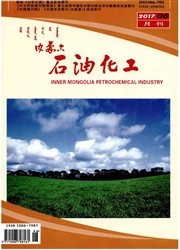

 中文摘要:
中文摘要:
本文综合运用磷灰石-锆石裂变径迹和(U-Th)/He、镜质体反射率及盆地模拟等手段,深入细致地探讨了中扬子江汉平原簰洲湾地区中、新生代构造-热史演化过程.研究结果表明,研究区中—新生代大规模构造抬升剥蚀、地层冷却事件始于早白垩世(140—130 Ma);大规模抬升冷却过程主要发生在早白垩世中后期至晚白垩世.研究区虽然可能存在一定厚度的晚白垩世—古近纪地层沉积,总体沉积规模相对较小.综合分析认为,区内应该存在较大厚度的中侏罗统或/和上侏罗统乃至早白垩世地层的沉积;而现今残存中生代中、上侏罗统地层相对较薄,主要是由于后期持续构造抬升剥蚀造成的,估计总剥蚀厚度约4300 m左右.区内中生代地层在早白垩世达到最大古地温,而不是在古近纪沉积末期;上三叠统地层最大古地温在170~190℃之间.热史分析结果表明,区内古生代古热流相对稳定,平均热流在53.64 mW·m-2;早侏罗世末期古热流开始降低,在早白垩世初期古热流约为48.38 mW·m-2.
 英文摘要:
英文摘要:
In this paper,apatite and zircon fission track and(U-Th)/He dating,vitrinite reflectance analysis and basin modeling are carried out,for more clearly understanding the tectonic and thermal history during the Mesozoic and Cenozoic era of the Paizhouwan area,eastern Jianghan Basin.The analysis results show that the enormous tectonic uplift,erosion,and formation cooling event during the Mesozoic and Cenozoic began at the early Cretaceous(140-130 Ma);the intense tectonic uplift-cooling process mainly occurred during the early Cretaceous to the Late Cretaceous.While there may be some sediments of the Late Cretaceous-Paleogene period,the overall deposition thickness is relatively small.There should be large-scale sediments deposited during the Middle Jurassic or/and Upper Jurassic and even the early Cretaceous.The present-day remnant is thin,mainly due to the later successive erosion for which the total estimated denudation thickness is about 4300 m.The Mesozoic strata in the studied area reached the maximum paleotemperature in the Early Cretaceous,rather than at the Paleogene sedimentary final,the maximum temperature of the Upper Triassic is about 170~190℃.The thermal history results also show that the ancient heat flow is relatively stable during the Paleozoic era.The average value of the heat flow is about 53.64 mW ? m~(-2);the heat flow began to decrease at the early Jurassic,and the lowest is about 48.38 mW ? m~(-2) happened during the beginning of the early Cretaceous approximately.
 同期刊论文项目
同期刊论文项目
 同项目期刊论文
同项目期刊论文
 Formation mechanism of carbonate cemented zones adjacent to the top overpressured surface in the cen
Formation mechanism of carbonate cemented zones adjacent to the top overpressured surface in the cen 期刊信息
期刊信息
